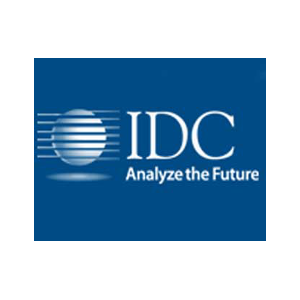The North African hardcopy peripherals (HCP) market suffered a double-digit year-on-year decline in shipments in Q4 2014, with the Algerian and Moroccan country markets performing particularly poorly.
 The latest figures released today by International Data Corporation (IDC) show the overall regional market shrank 16.1% in volume and 4.7% in value during the quarter. And while budget cuts hindered IT spending by government agencies and large enterprises in Algeria and Morocco, there was better news in Tunisia, where the market saw a slight upturn in both volume and value.
The latest figures released today by International Data Corporation (IDC) show the overall regional market shrank 16.1% in volume and 4.7% in value during the quarter. And while budget cuts hindered IT spending by government agencies and large enterprises in Algeria and Morocco, there was better news in Tunisia, where the market saw a slight upturn in both volume and value.
IDC’s Europe, Middle East, and Africa Quarterly Hardcopy Peripherals Tracker tracks market trends and opportunities in the converging hardcopy peripherals markets of the EMEA region. Shipments and value of shipments are provided by end-user (home, small business, medium-sized business, large business, and government/education) and channel (direct sales, distributor/aggregator, dealer, retail, and VAR/SI) segments.
IDC’s data shows that HCP shipments to Morocco fell 28.4% in volume and 23.6% in value year on year in Q4 2014, while Algeria suffered a downturn of 5.6% in volume terms and a slight increase in value of 5.4%. The Tunisian market, meanwhile, was up 2.7% in volume and 8.8% in value. “The growth in Tunisia can be attributed to the fact that several large public and private sector deals were relaunched following the completion of the country’s parliamentary elections,” says Imane Belhabes, a research analyst for imaging, printing, and document solutions at IDC North and Francophone Africa. “Government agencies and large enterprises typically shape the IT spending structure of the region, so the budget cuts seen once again in these segments in Morocco and Algeria had a profound impact on the region’s overall performance.”
The inkjet technology segment suffered the biggest declines of the quarter, with shipments down 58.4%, 43.0%, and 7.4%, respectively, in Morocco, Algeria, and Tunisia. Morocco and Algeria posted value declines of 44.2% and 58.3%, while inkjet revenues in Tunisia went up 42.6% in comparison to the same period of the previous year. “The main reason for the inkjet decline, particularly in Morocco, was a shift away from entry-level devices, which impacted overall shipment volumes,” continues Belhabes. “Some vendors are changing their strategies in terms of product focus by pushing their more profitable devices in place of entry-level volume inkjet printers. This explains the high growth rates registered in the mid and high-end segments, and gives an indication of vendors’ go-to-market plans for 2015.”
Color laser shipments to North Africa decreased 9.1% year on year in Q4 2014 to total 4,900 units, although the value of these shipments was up 26.6% to $6.6 million. This strong growth in revenue was driven by the remarkable performance of the Tunisian and Algerian markets, which expanded 23.3% and 19.8% in volume, respectively. Much of this growth was seen in the higher speed segments (above 31 pages per minute), despite the low- and mid-speed segments continuing to dominate color laser shipments to these countries. Morocco registered a sizeable 28.3% downturn in shipments over the same period, with substantial declines again seen in the low- and mid-speed segments. Revenues, however, were up 57.1% year on year.
The North African monochrome laser market recorded a flat performance in volume terms in Q3 2014 but an 8.9% year-on-year decline in value. While Algeria saw its shipments shrink 23.1% for the quarter, Morocco and Tunisia fared much better, with unit growth of 13.3% and 12.2%, respectively. The decline in Algeria, which cut across all segments, was mainly due to weak tendering activity in the country, especially from the government, which is the primary source of demand when it comes to low-end mono laser printers. The region’s serial dot matrix (SDM) market contracted 18.8% in volume year on year in Q4 2014, but expanded 1.1% in value. A lack of deals and tenders contributed to this poor performance, particularly in the Algerian and Tunisian markets, which posted respective declines of 29.7% and 11.8% over the quarter.











